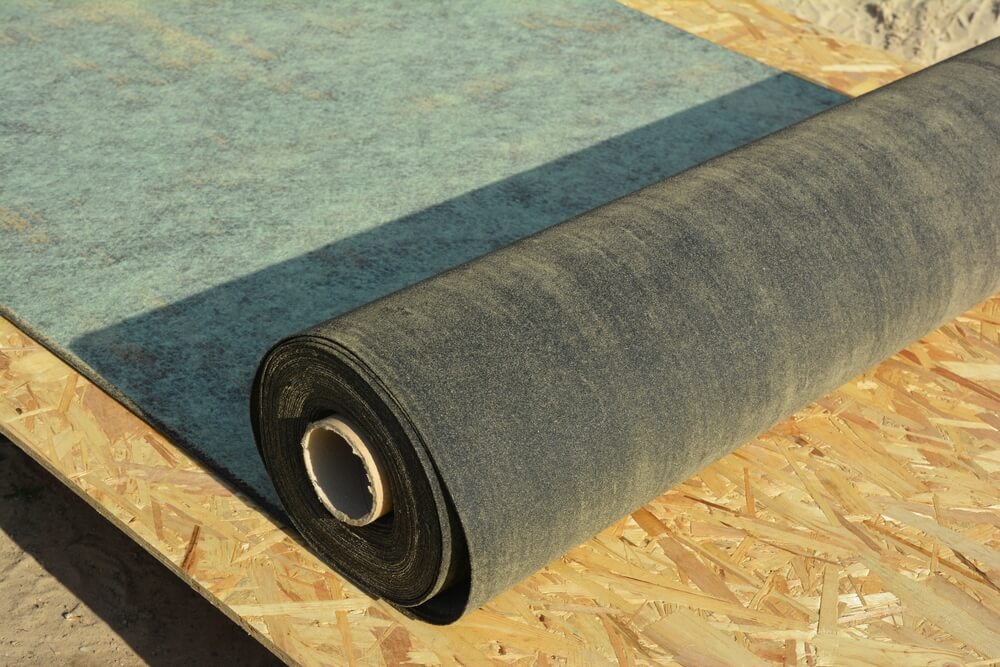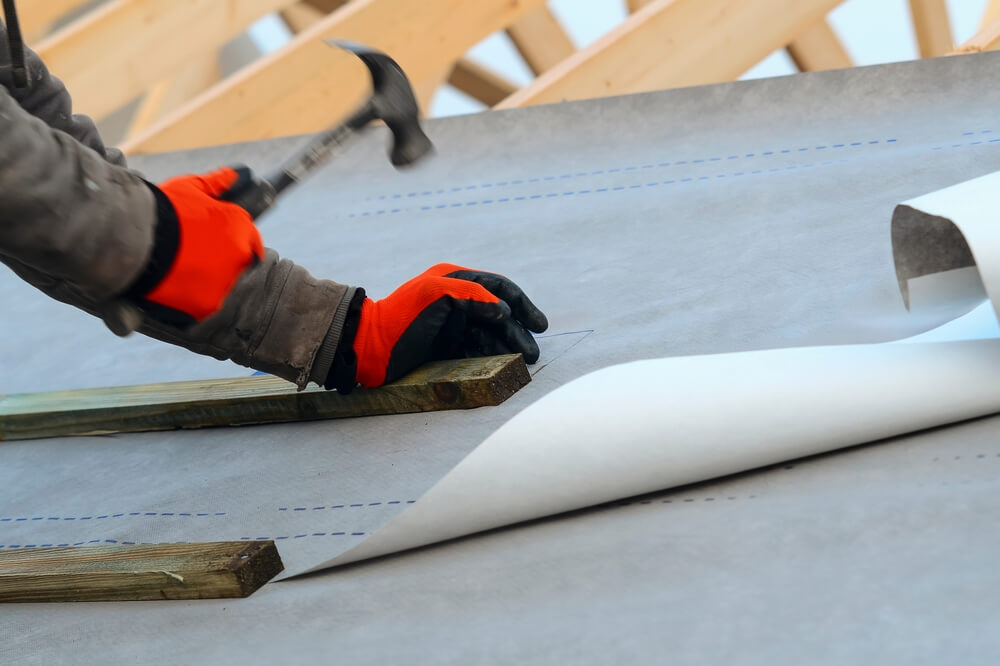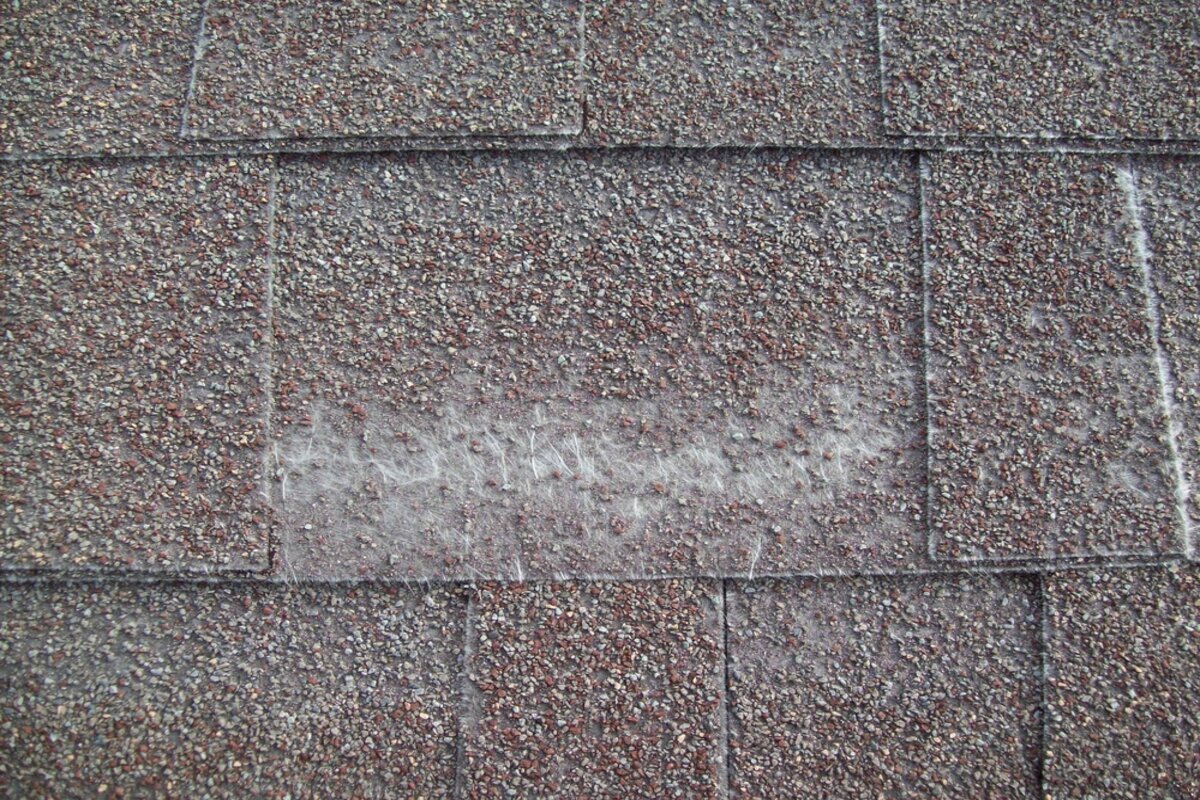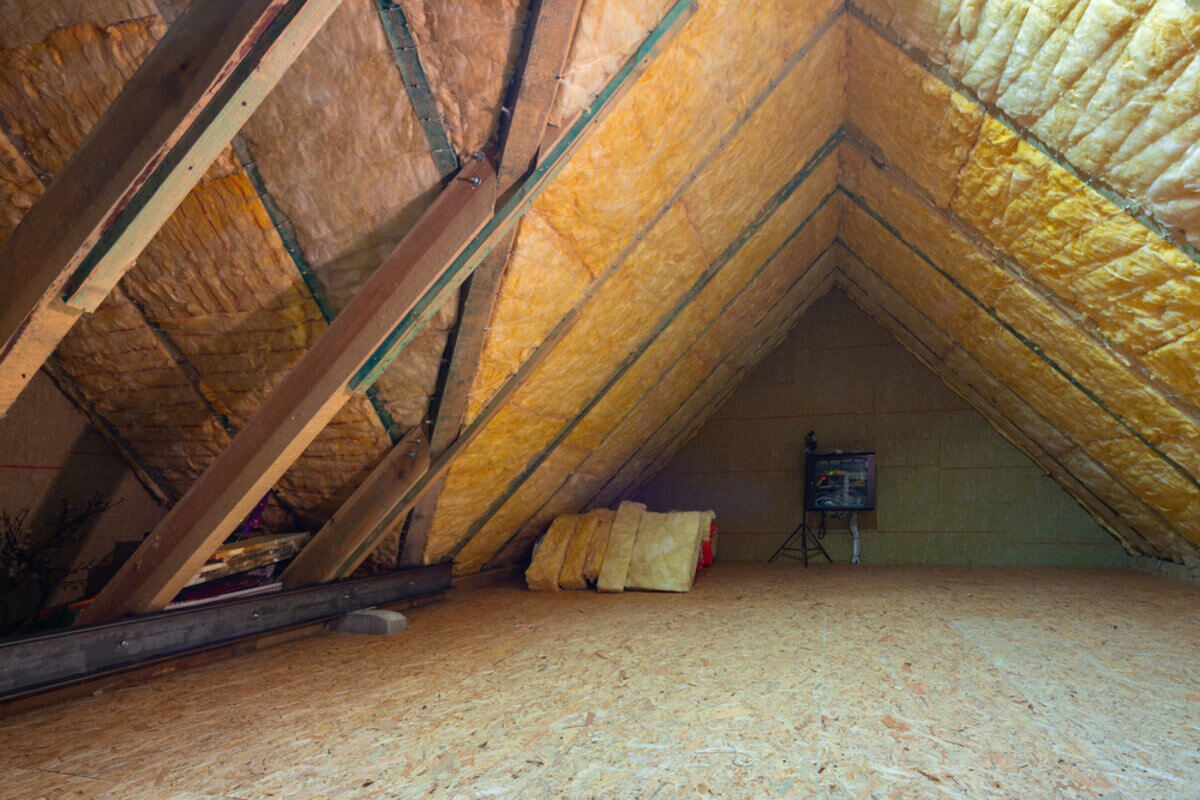Wondering about synthetic vs. felt roofing underlayment? Or did you not know that there is a layer of protection on top of the roof deck?
Roofing underlayment sits between the shingles and the roof sheathing. The two main options for roofing underlayment are synthetic underlayment and felt underlayment (also known as asphalt-saturated felt).
Although both options act as a moisture barrier between your roof deck and the roofing materials, they are very different when it comes to performance, durability, and cost.
Synthetic vs. Felt Roofing Underlayment Quick Guide
Synthetic Underlayment
- Made from polypropylene or polyethylene (plastic polymers) woven or spun into sheets.
- Lightweight and more durable than felt.
- Resistant to tearing, UV exposure, and water absorption.
Synthetic underlayment might be your best bet if you’re looking for superior durability, waterproofing, and long-term protection. Though more expensive, it provides better performance, especially in extreme weather conditions, and is a better choice for long-lasting roofing projects.
Felt Underlayment
- Traditionally made from asphalt-saturated paper or fiberglass.
- Felt underlayment comes in 15-pound and 30-pound felt, with the 30-pound version being thicker and more durable.
- More prone to tearing, especially when wet.
Felt underlayment is your best choice if you need a budget-friendly option for smaller or temporary projects or if the roofing materials will be installed quickly with minimal weather exposure. Although felt underlayment is less durable than synthetic, it is still a reliable option.
Synthetic vs. Felt Roofing Underlayment Comparison
Durability
Synthetic underlayment is highly durable and resistant to tears, punctures, and UV damage. It’s also less likely to degrade or wrinkle when exposed to water, heat, or cold.
Felt underlayment is less durable, especially in extreme weather conditions. It can also wrinkle, tear, or become saturated when exposed to moisture for extended periods.
Weight and Ease of Installation
Synthetic underlayment is lighter than felt, making it easier to handle and install. Its slip-resistant surface provides better traction for roofers during installation, and it is less likely to bunch or wrinkle.
Felt underlayment is heavier, which can make installation more labor-intensive. It can also become slippery when wet, making installation tricky.
Water Resistance
Synthetic underlayment is waterproof, preventing moisture from penetrating through to the roof deck even in extreme conditions. It doesn’t absorb water, making it a more reliable option over time.
Felt roofing underlayment is water-resistant but not waterproof. It can absorb water over time, leading to potential leaks or damage to the roof deck.
Breathability
Some synthetic underlayments are designed with breathable options. Synthetic underlayments are less breathable than felt, which may trap moisture if there’s inadequate ventilation under the roof.
Felt underlayments are more breathable, allowing some air circulation under the roof, which can help manage moisture levels beneath the shingles.
Cost
Although synthetic underlayments are more expensive upfront, they offer better long-term durability and performance, which can offset the initial higher price through lower maintenance and replacement costs.
But, if you are on a tight budget, felt underlayments are cheaper upfront. The lower cost does mean, however, more frequent maintenance or replacement due to its lower durability.
Lifespan
When installed correctly, synthetic underlayments typically last the life of the roof and are more resistant to extreme temperatures, UV rays, and moisture.
On the other hand, felt underlayments usually have a shorter lifespan, particularly if they are exposed to moisture or sunlight. They are often used for temporary purposes or lower-budget roofing projects.
Style Exteriors—Your Go-To Roofing Specialists

At the heart of Style Exteriors, we believe that a roof is more than just a structure; it’s a promise of security, a testament to quality, and a reflection of your personal style. But that doesn’t mean we won’t ensure your roof is solid. From the underlayment to the shingles, we’ve got your roof installation covered.
So, if you want more information about synthetic vs. felt roofing underlayment, contact us today.






